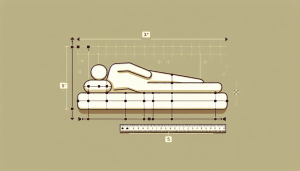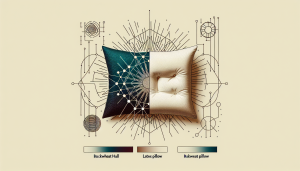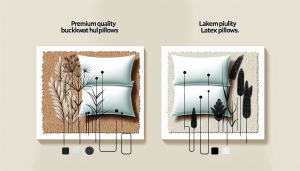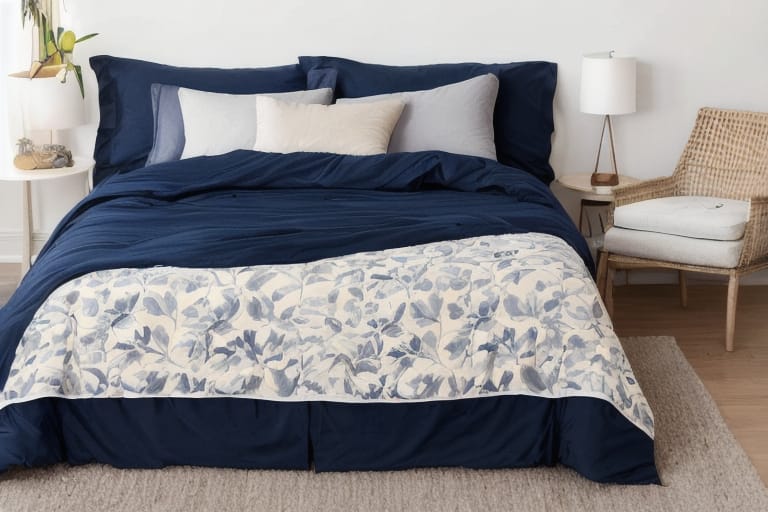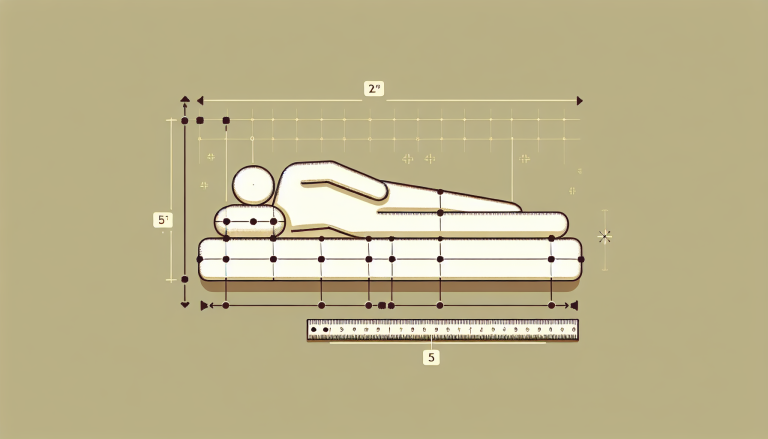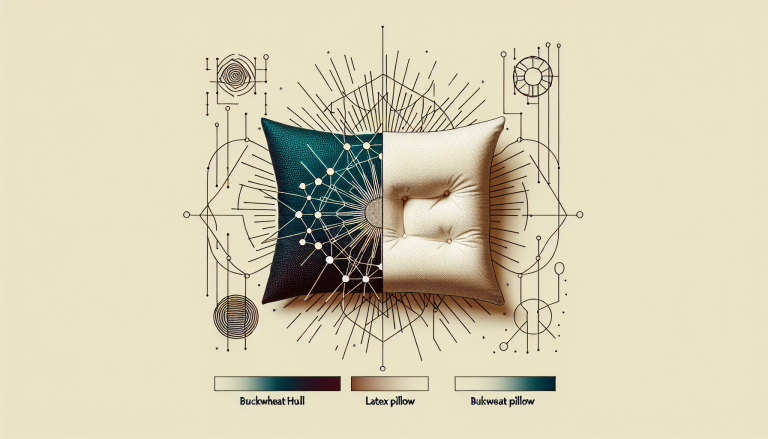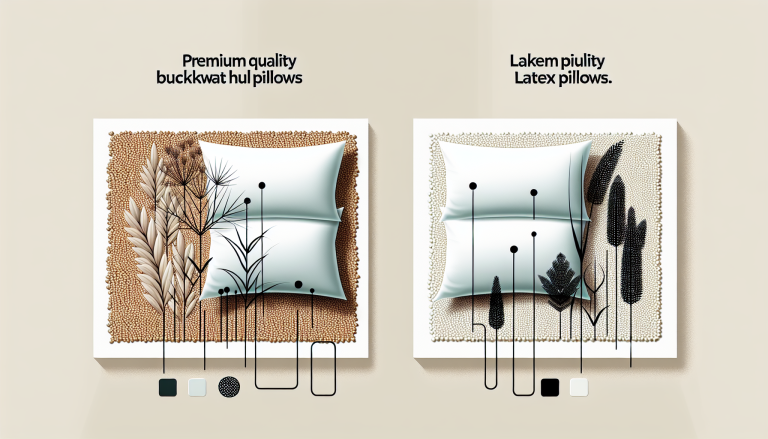Are you curious about the fluffy, cloud-like bedding known as a down comforter? These luxurious blankets have been a popular choice for centuries, offering unparalleled warmth, softness, and comfort. In this beginner’s guide, we’ll explore the world of down comforters, answering the question, “Why is it called a down comforter?” and providing you with everything you need to know before investing in one.
What is Down?
Before we dive into the specifics of down comforters, let’s define what “down” actually is. Down refers to the soft, fluffy undercoating found beneath the feathers of geese and ducks. This natural insulation is incredibly lightweight and breathable, making it an ideal fill material for bedding.
Goose Down vs. Duck Down
Both goose and duck down are used in comforters, but there are some differences between the two:
- Goose down is generally considered to be of higher quality, as it tends to be larger and fluffier than duck down. This results in a higher fill power and better insulation.
- Duck down, while still effective, is typically smaller and less fluffy than goose down. However, it is often more affordable and can be a good choice for those on a budget.
Down Clusters and Air Pockets
Down consists of tiny, soft clusters that create air pockets. These air pockets trap heat, providing exceptional insulation without adding bulk or weight to the comforter. The more air pockets a comforter has, the warmer and fluffier it will be.
Fill Power
Fill power is a measure of the loft or fluffiness of down. It indicates the volume of space one ounce of down occupies in cubic inches. Higher fill power means larger down clusters, more air pockets, and better insulation. Fill power typically ranges from 400 to 900, with higher numbers indicating higher quality down.
Benefits of Down Comforters
Down comforters offer a range of benefits that make them a popular choice for bedding:
- Warmth and insulation: Down’s unique structure traps heat, providing exceptional warmth without the weight of other materials.
- Lightweight and breathable: Despite their warmth, down comforters are incredibly lightweight and breathable, allowing air to circulate and preventing overheating.
- Softness and fluffiness: Down clusters create a soft, fluffy texture that feels luxurious against the skin.
- Durability: With proper care, down comforters can last for many years, making them a worthwhile investment.
Down Comforter Construction
The way a down comforter is constructed can affect its warmth, loft, and overall performance. There are two main types of construction:
Baffle Box Design
In a baffle box design, thin strips of fabric are sewn between the top and bottom layers of the comforter, creating three-dimensional walls or “baffles.” This allows the down to loft fully and prevents it from shifting, ensuring even distribution of warmth.
Sewn-Through Box Design
A sewn-through box design features the top and bottom layers of the comforter sewn directly together in a grid pattern, creating smaller pockets of down. This design is typically less expensive and lighter weight than baffle box construction, but it may not allow the down to loft as fully.
Gusset Walls
Some down comforters feature gusset walls, which are vertical strips of fabric sewn around the edges of the comforter. This adds depth and allows the down to loft even more, resulting in a fluffier, more insulating comforter.
Thread Count and Cotton Shell
The outer shell of a down comforter is typically made of cotton, with thread count indicating the number of threads per square inch. Higher thread counts (e.g., 300 or above) result in a softer, more durable fabric. Look for comforters with tightly woven, high-quality cotton shells to ensure the down stays inside and the comforter lasts longer.
Down Alternative Comforters
For those with allergies or concerns about animal welfare, down alternative comforters are an excellent option. These comforters use synthetic fill materials that mimic the insulating properties of down without the potential drawbacks.
Polyester Fill
Polyester is a common fill material for down alternative comforters. It’s affordable, hypoallergenic, and easy to care for, making it a popular choice for many households.
Lyocell Fill
Lyocell is a sustainable, plant-based fill material derived from wood pulp. It offers good insulation and moisture-wicking properties, making it a comfortable and eco-friendly option.
Celliant Technology
Some down alternative comforters feature Celliant technology, which uses thermo-reactive minerals to convert body heat into infrared energy. This energy is believed to promote blood circulation and aid in muscle recovery, making these comforters a good choice for active individuals.
Benefits of Down Alternative Comforters
- Hypoallergenic: Down alternative comforters are ideal for those with allergies to down or feathers.
- Easy care: Most down alternative comforters are machine washable and dryable, making them easy to maintain.
- Affordable: Down alternative comforters are typically less expensive than down comforters, making them a budget-friendly option.
- Ethical: For those concerned about animal welfare, down alternative comforters provide a cruelty-free option.
Duvet Covers
A duvet cover is a removable, protective cover for your down comforter. It serves several purposes:
- Protection: Duvet covers protect your comforter from dirt, stains, and wear, extending its lifespan.
- Style: With a duvet cover, you can easily change the look of your bedding without replacing the entire comforter.
- Easy care: Most duvet covers are machine washable, making them easier to clean than the comforter itself.
Materials Used for Duvet Covers
Duvet covers are available in a variety of materials, each with its own benefits:
- Cotton: Soft, breathable, and easy to care for, cotton is a popular choice for duvet covers.
- Linen: Known for its durability and moisture-wicking properties, linen is a luxurious and eco-friendly option.
- Silk: Smooth, lightweight, and hypoallergenic, silk duvet covers offer a touch of elegance to any bedroom.
- Bamboo: Sustainable, soft, and naturally antimicrobial, bamboo duvet covers are a great choice for those with sensitive skin.
Choosing the Right Duvet Cover
When selecting a duvet cover, consider the following factors:
- Size: Make sure to choose a duvet cover that matches the size of your comforter (e.g., twin, full, queen, king).
- Material: Consider your personal preferences and any allergies or sensitivities when choosing a material.
- Style: Select a color, pattern, or design that complements your bedroom decor and personal taste.
- Closure type: Duvet covers typically feature buttons, zippers, or ties to keep the comforter in place. Choose the closure type that you find most convenient.
Comforter Sizes
Down comforters are available in a range of sizes to fit various bed types:
| Size | Dimensions (inches) |
|---|---|
| Twin | 68 x 86 |
| Full | 84 x 86 |
| Queen | 90 x 94 |
| King | 104 x 94 |
| California King | 104 x 98 |
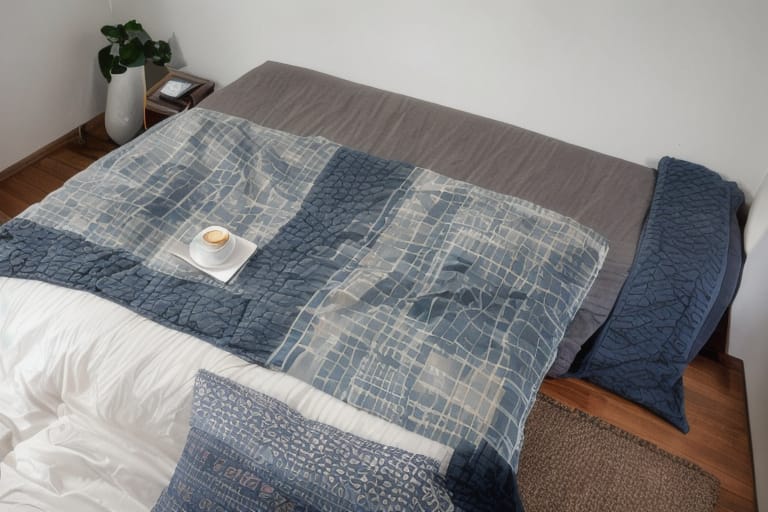
Oversized Comforters
Some manufacturers offer oversized comforters, which are larger than standard sizes. These comforters provide extra coverage and can be particularly useful for those with deeper mattresses or who prefer a more generous amount of overhang.
Benefits of Oversized Comforters
- Enhanced coverage: Oversized comforters provide more coverage, ensuring that you stay warm and cozy throughout the night.
- Accommodates deep mattresses: If you have a tall or pillow-top mattress, an oversized comforter can provide the necessary coverage.
- Versatile: Oversized comforters can be used on multiple bed sizes, making them a flexible choice for guest rooms or households with varying bed sizes.
Choosing the Right Size
When selecting an oversized comforter, consider the following:
- Mattress depth: Measure the height of your mattress to ensure the comforter will provide adequate coverage.
- Personal preference: Consider how much overhang you prefer and choose a size accordingly.
- Bedding storage: Oversized comforters may require more storage space when not in use, so keep this in mind when making your selection.
Comforter Care and Maintenance
Proper care and maintenance can help extend the life of your down comforter and keep it looking and feeling its best.
Washing Instructions
- Frequency: Down comforters should be washed every 1-2 years, or as needed.
- Machine washing: Use a large-capacity, front-loading washer and a mild detergent specifically designed for down.
- Water temperature: Wash your comforter in cool or warm water to prevent damage to the down.
- Gentle cycle: Use a gentle or delicate cycle to minimize agitation and prevent clumping.
Drying Tips
- Low heat: Dry your comforter on low heat to prevent damage and ensure even drying.
- Dryer balls: Add wool dryer balls to the dryer to help fluff the down and prevent clumping.
- Thorough drying: Ensure your comforter is completely dry before storing or using it to prevent mildew growth.
Storage Recommendations
- Breathable storage: Store your comforter in a breathable cotton bag or cover to allow air circulation and prevent moisture buildup.
- Avoid compression: Do not store your comforter in a vacuum-sealed bag or tightly compressed space, as this can damage the down clusters.
- Dry location: Store your comforter in a cool, dry place away from direct sunlight and heat sources.
Allergens and Down Comforters
For some individuals, down comforters can trigger allergies or sensitivities. This is often due to dust mites or other allergens that can accumulate in the bedding over time.
Hypoallergenic Options
If you suffer from allergies but still want to enjoy the benefits of a down comforter, consider the following options:
- Hypoallergenic down: Some manufacturers offer down that has been treated to reduce allergens and irritants.
- Down alternative comforters: As mentioned earlier, down alternative comforters are a great choice for those with allergies, as they are typically hypoallergenic and easier to clean.
Cleaning Tips for Allergy Sufferers
To minimize allergens in your down comforter, follow these cleaning tips:
- Regular washing: Wash your comforter more frequently, following the manufacturer’s instructions.
- Allergen-proof covers: Use an allergen-proof duvet cover to create a barrier between you and the comforter.
- Vacuuming: Regularly vacuum your comforter using the upholstery attachment to remove dust and allergens.
Comforter Warranties
Many down comforter manufacturers offer warranties to protect your investment and ensure your satisfaction.
Common Warranty Terms
- Limited warranty: Most warranties are limited, covering defects in materials or workmanship for a specific period (e.g., 1-5 years).
- Prorated warranty: Some warranties are prorated, meaning the coverage decreases over time based on the age of the comforter.
- Exclusions: Warranties typically exclude normal wear and tear, improper care, and damage caused by misuse or accidents.
Manufacturing Defects
If your down comforter has a manufacturing defect, such as a seam coming unstitched or down leaking through the shell, it should be covered under the warranty.
Repairs and Replacements
Depending on the warranty terms and the nature of the issue, the manufacturer may offer repairs, replacements, or a prorated refund for your down comforter.
Choosing the Right Down Comforter
With so many options available, choosing the right down comforter can seem overwhelming. Consider the following factors when making your decision:
Considering Fill Power
As mentioned earlier, fill power indicates the loft and insulating properties of the down. Higher fill powers (e.g., 600+) provide greater warmth and fluffiness, but also come at a higher price point. Determine your desired level of warmth and budget when selecting a fill power.
Selecting the Appropriate Size
Make sure to choose a comforter size that fits your bed and personal preferences. Refer to the comforter size chart earlier in this guide for standard dimensions.
Deciding on the Shell Material
The shell material of your down comforter can affect its feel, durability, and breathability. Common options include cotton, silk, and bamboo. Consider your personal preferences and any allergies when choosing a shell material.
Determining the Desired Warmth Level
Down comforters are available in various warmth levels, from lightweight to extra warm. Consider your sleep environment, personal temperature preferences, and the season when selecting a warmth level.
| Warmth Level | Typical Fill Power | Best For |
|---|---|---|
| Lightweight | 400-599 | Hot sleepers, warm climates, summer use |
| All-Season | 600-799 | Year-round use in most climates |
| Extra Warm | 800+ | Cold sleepers, cold climates, winter use |
Advantages of Down Comforters Over Other Bedding
Down comforters offer several advantages over other types of bedding:
Comparison to Synthetic Comforters
- Warmth-to-weight ratio: Down comforters provide superior warmth for their weight compared to synthetic comforters.
- Durability: With proper care, down comforters can last longer than synthetic alternatives.
- Breathability: Down is more breathable than most synthetic fills, helping to regulate temperature and prevent overheating.
Comparison to Wool Comforters
- Lightweight: Down comforters are typically lighter than wool comforters, making them easier to handle and store.
- Fluffiness: Down has a softer, fluffier feel compared to wool, which some people find more comfortable.
- Allergen considerations: While both down and wool can trigger allergies, down comforters are available in hypoallergenic options, whereas wool may not be suitable for those with wool allergies.
Comparison to Electric Blankets
- Natural insulation: Down comforters provide warmth through natural insulation, without the need for electricity.
- Even heat distribution: Down comforters offer consistent warmth throughout, while electric blankets may have hot or cold spots.
- Safety: Down comforters do not pose the same fire or electrical safety risks as electric blankets.
Down Comforters for Different Seasons
Down comforters are versatile and can be used throughout the year, depending on their fill power and construction.
Lightweight Options for Summer
For hot sleepers or warm climates, a lightweight down comforter with a fill power of 400-599 can provide just the right amount of insulation without causing overheating.
Heavier Options for Winter
In cold climates or for those who prefer extra warmth, a down comforter with a fill power of 800+ can provide the necessary insulation to stay cozy during the winter months.
All-Season Down Comforters
For year-round use in most climates, an all-season down comforter with a fill power of 600-799 offers a versatile option that can be easily layered with blankets for additional warmth when needed.
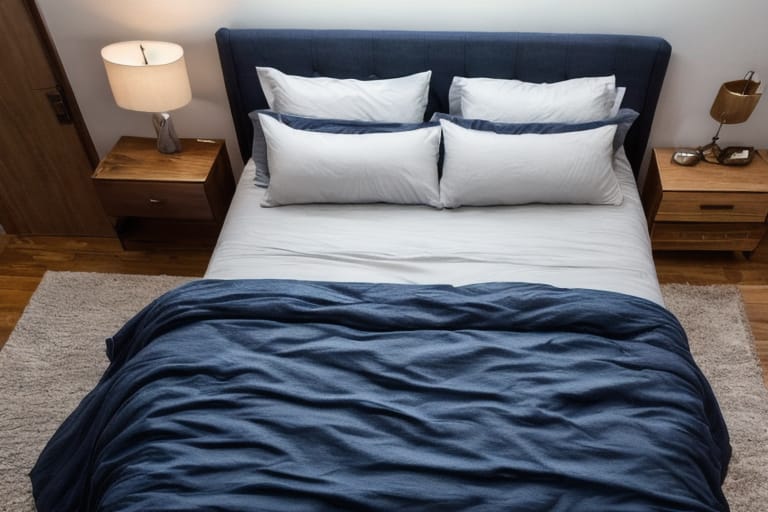
Frequently Asked Questions
How long do down comforters last?
With proper care and maintenance, a high-quality down comforter can last 8-15 years or more. Factors that affect the lifespan of a down comforter include the quality of the down, the construction of the comforter, and how well it is cared for.
Can down comforters be machine washed?
Yes, most down comforters can be machine washed using a mild detergent and a gentle cycle. Always refer to the manufacturer’s care instructions for specific guidance on washing and drying your comforter.
Are down comforters worth the investment?
Down comforters are often more expensive than other types of bedding, but they offer unparalleled warmth, comfort, and durability. If you value a luxurious sleep experience and are willing to invest in a high-quality product that can last for many years, a down comforter is worth the investment.
How do I prevent my down comforter from shifting?
To keep your down comforter from shifting inside the duvet cover, look for comforters with corner loops or ties that can be attached to the inside corners of the duvet cover. Alternatively, you can use comforter clips or pins to secure the comforter to the cover.
Are down comforters eco-friendly?
Down is a natural, biodegradable material, making it.

